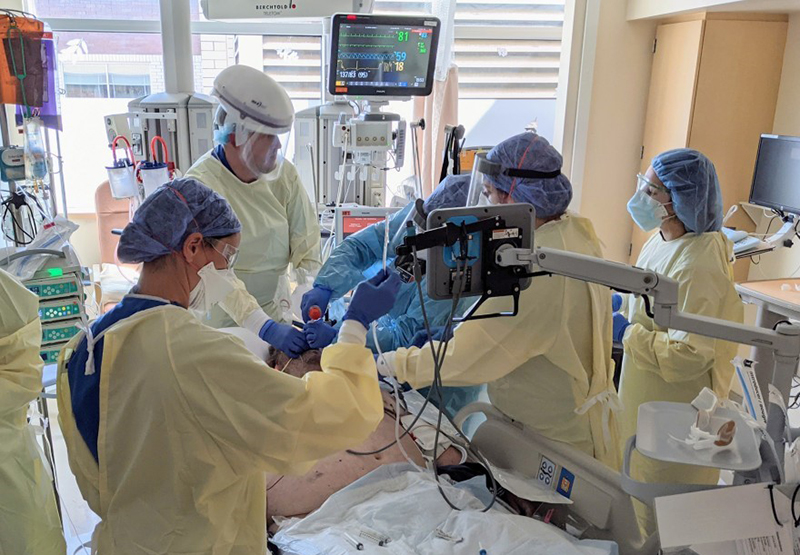Share:

The daily number of COVID-19 hospitalizations has been steadily rising, from the low 20s just a few weeks ago to 50 on Monday. This can mean only one thing: Asante may be experiencing the start of another surge.
The omicron variant, which has been detected in Southern Oregon, is much more transmissible than earlier variants of the SARS-CoV-2 virus, including the delta variant. While vaccination still offers very good protection against becoming severely ill or requiring hospitalization, omicron’s increased transmissibility means we can expect more vaccinated and unvaccinated people alike to become infected. Likewise, this surge is likely to move more quickly than those with the original or earlier variants of the virus.
Forecasting by Oregon Health & Science University, which predicted the delta peak almost to the day, shows a marked increase in omicron cases beginning in January and cresting in February. OHSU also predicts that the number of hospitalizations could eclipse the delta variant surge.
Surge planning
Asante has been preparing for the next wave of hospitalizations and has developed a surge plan. Despite the post-delta slowdown, the system has remained at or above 80% occupancy. Asante Rogue Regional Medical Center has been at or above 90% occupancy since August of 2020.
A shortage of beds at long-term and skilled nursing facilities has meant that many COVID patients are still being boarded in other parts of the hospital. More than 1,000 procedures have been delayed or canceled and 226 regional referrals were denied in October alone.
The surge plan breaks down volumes into five stages, beginning with converting existing hospital spaces into patient care rooms then progressing to nonclinical areas such as the inpatient rehab gym as volumes rise. At the peak of the surge, beds may be set up outside the hospital or a field hospital established. Conditions will be evaluated daily (sometimes three times a day) to discuss discharge planning, load balancing among the three hospitals and more.
“We continue to look for solutions to meet demands,” said Amanda Kotler, vice president of Nursing for ARRMC and AACH. “Every area continues to play a key role in patient throughput and capacity management.”
Slowing the spread
Health experts say full vaccination plus a booster shot provide the strongest protection against omicron. Three doses of the Pfizer/Comirnaty or Moderna mRNA vaccines are more effective at preventing severe illness and hospitalizations than the single-dose Johnson & Johnson vaccine or no vaccine at all.
Nationally, the age group with the highest number of infections are 18- to 39-year-olds. The elderly and youths account for the smallest infected groups.
“Vaccination, masking and physical distancing remain the best ways to protect yourself from COVID-19, slow transmission of the SARS-CoV-2 virus and reduce the likelihood of more variants arising in the future,” said Kirsten Schutte, MD, infectious disease physician and medical director of Asante Infection Prevention.
The CDC recommends that everyone age 5 and older become fully vaccinated. The agency also urges everyone age 18 and older get a booster shot at least two months after their initial Johnson & Johnson vaccine or six months after the second dose of the two-dose mRNA vaccines.
Employees can receive a Pfizer/Comirnaty booster by appointment Asante Employee Health or through their APP primary care provider. The general public is advised to visit vaccines.gov and search for the nearest vaccine location.
If you have a question, please contact the author or relevant department directly.



